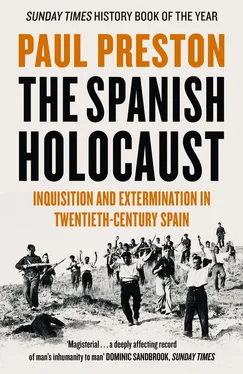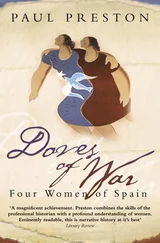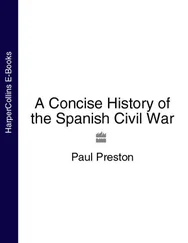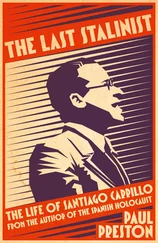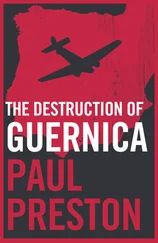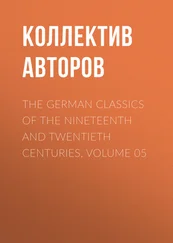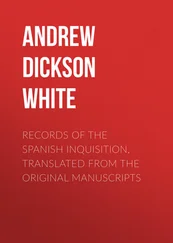Under pressure from the FNTT, on 3 March Ruiz-Funes issued a decree permitting the yunteros of Extremadura to reoccupy land that they had worked before being evicted. Its legal implementation would be complex and clearly take some time. But the yunteros were desperate and spring planting was a matter of urgency. Just before the new Cortes met, the FNTT called for a massive mobilization of the peasantry on Sunday 15 March to remind the Popular Front deputies of their electoral promises. The demands of the demonstrators were the immediate hand-over of land with credit for peasant collectives, the return of common lands, work for the unemployed, strict observation of agreed wages, working conditions and work-sharing, release of the remaining prisoners and the disarming of extreme rightists. 55
The call was obeyed in much of Castile and the north and throughout the south. Banners bearing these demands and red flags headed processions of labourers giving clenched-fist salutes and chanting the battle cry of the Asturian miners, ‘Unite, Proletarian Brothers!’ Díaz de Entresotos, who witnessed this and other demonstrations in Mérida, revealed his bitterness at the turning of the tables: ‘From the pavement, with desolation in their eyes and infinite anguish in their hearts, respectable folk watched the demonstrators pass. I was eaten up with a desperate suppressed rage. My head was bursting with murderous thoughts and I would have given my life to be able to kill that scum whose very presence constituted a humiliation and a challenge.’ 56
The 15 March demonstration was a success in numerous villages of Cáceres, León, Zamora and Salamanca and even in Navarre, Valladolid and Burgos. In Salamanca, there were processions in many small towns. In most places, despite the anger of the local right, there were no major incidents. However, in the small village of Mancera de Abajo near Martín Veloz’s power base, Peñaranda de Bracamonte, the demonstration was attacked by right-wing thugs. A young Communist and a child were shot dead and, in the subsequent tumult, a local landowner was stabbed to death. The burial of the Communist in the provincial capital saw a massive turn-out of the left, led by the Mayor of Salamanca, Casto Prieto Carrasco of Azaña’s party, Izquierda Republicana. The outrage of the local right was inflamed further when, fearful of further disturbances, the new Civil Governor, Antonio Cepas López, also of Izquierda Republicana, prohibited religious processions scheduled for Holy Week. Over the following months, there were a number of clashes between Falangists and leftists during which innocent bystanders were hurt. 57
A major escalation took place at dawn on 25 March 1936. In torrential rain, more than 60,000 landless peasants occupied 1,934 mainly cattle-rearing estates in Badajoz and proceeded to carry out symbolic acts of ploughing. The initiative had been meticulously organized by the FNTT whose officials had arranged which families were to go to each estate. It was the union’s intention that the estates be cultivated as collectives. 58In order to forestall violence, the Ministry of Agriculture quickly legalized the occupations and settled 50,000 families. In Cádiz, Toledo, Salamanca and the sierra of Córdoba, labourers also invaded estates, although on a smaller scale. Toledo saw the highest proportion of estates expropriated, and was third, behind Badajoz and Cáceres, in the proportion of peasants settled. This was reflected in the vengeance wreaked on the peasantry when the Francoist columns arrived early in the Civil War. When the Ministry declared the occupied estates ‘of public utility’, the landowner was guaranteed compensation in relation to potential rent. Nevertheless, this spontaneous imposition of agrarian reform infuriated the local owners, who sent in their armed retainers to reoccupy the estates. When the mixed juries sent workers to estates left fallow, they refused to pay their wages. It was a complex situation, with many of the smaller farmers facing real difficulties in paying unwanted workers. Inevitably, crop thefts increased. When the harvest was imminent, the owners refused to negotiate wage and working conditions with local branches of the FNTT. Those who refused to pay the workers were first fined and, if they still refused, in a few cases arrested. 59
Faced with incontrovertible evidence that the agrarian reforms of the Republic would be combated with violence, the FNTT echoed Zabalza’s call for the creation of people’s militias, complaining that:
the government policy of disarming all citizens is a joke. In fact, this means handing us over helpless to our enemies. For the last two years, the Civil Guard has been disarming us while leaving untouched the arsenals of the fascist elements, and when we speak of fascists, we mean the CEDA as well as the Falange. We know only too well that it is the Cedistas and other landowners who pay the Falangist squads. Thus, we face, armed to the teeth, all the landowners, their lackeys, their paid thugs, the shotgun-toting clergy, and backing them up, the Civil Guard, the bourgeois judiciary and government agronomists. 60
One of the factors that did most to increase social tension during the spring of 1936 was anti-clericalism. Religious hatred was most intense in the towns and villages where the clergy had been vocal in support of the CEDA and of the post-1934 repression. Revenge sometimes took the form of the newly reinstated mayors preventing Catholic burials, baptisms and weddings or charging for bells to be rung. In Rute in southern Córdoba, the Socialist Mayor fined the parish priest for carrying the viaticum through the streets without having applied for a licence to do so. In several places, religious statues and monumental crucifixes were destroyed. This was especially true in Andalusia and the Levante where there was a rash of church burnings and the tombs of clergy were profaned. In several villages in La Mancha, religious processions were interrupted and the faithful harassed by young workers as they left Mass. In Santa Cruz de Mudela, in the south of Ciudad Real, in mid-March, an attempt to set fire to the parish church was prevented by the Civil Guard. Over the next two months, the Mayor closed two Catholic schools, prohibited Catholic burials, prevented children from wearing their first Holy Communion outfits in the village and even hung religious medals from the collars of dogs that he loosed among people leaving Sunday Mass. In Cúllar de Baza in Granada, in June, the Mayor allegedly broke into the church at night and dug up the body of the recently deceased parish priest in order to bury him in the civil cemetery. These were extreme cases. In most places, the Holy Week processions went ahead without incident and manifestations of anti-clericalism diminished after the end of May. Nevertheless, the religious clashes that did take place were an important factor in the political polarization and the incitement of violence. There were instances of trigger-happy clergy (curas trabucaires). In Cehegín (Murcia), when his residence was surrounded, the parish priest opened fire on demonstrators, killing one of them. In Piñeres (Santander), a priest shot at villagers and wounded one. The parish priest of Freijo (Orense) possessed a Winchester rifle, a Mauser pistol and a Remington revolver. 61
Confrontation intensified greatly when work conditions were negotiated in April. The landowners were angered that the Popular Front town councils intended to impose substantial fines on those who flouted the agreements reached by the mixed juries. 62The agreements were largely ignored in Badajoz, Córdoba, Ciudad Real, Málaga and Toledo. Throughout Badajoz, the owners refused to hire workers and used machinery to bring in the harvest by night. In Almendralejo in the south of the province, a prosperous area, more than two thousand men had no work because the local owners refused to employ FNTT members. Moreover, the unity of the landlords was maintained by threats that any of their number who negotiated with the union would be killed. Nevertheless, the Civil Governor ordered the arrest of four of the richest owners. The tension in the town would explode into bloody violence when the Civil War broke out. 63In Zafra, the reinstated Mayor, José González Barrero, chaired a mixed committee of landowners and workers which arranged for the placing of unemployed labourers in the area. When the Francoist column entered Zafra on 7 August, four of the five worker representatives on the committee were murdered. 64
Читать дальше
